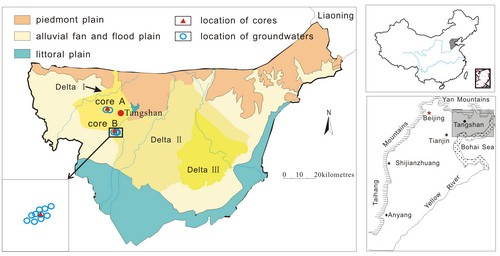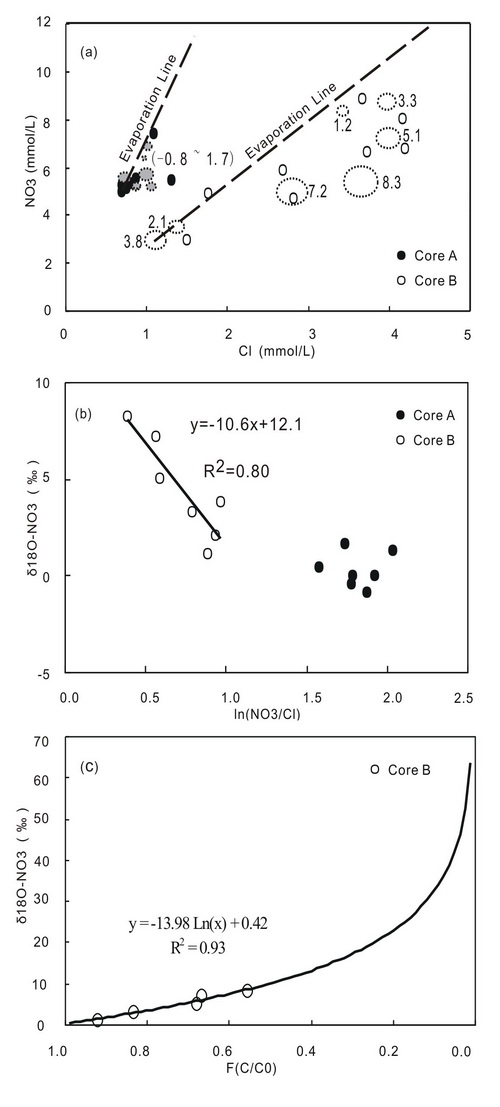Ph.D. student YUAN Lijuan and her teacher Professor PANG Zhonghe investigate the main processes controlling nitrate distribution in the unsaturated zone and aquifer by employing chemical and isotopic tracers. Soil water was extracted from two soil cores drilled in a typical agricultural cropping area of the North China Plain (NCP), where groundwater was also sampled. The results indicate that evaporation and denitrification are the two major causes of the distribution of nitrate in soil water extracts in the unsaturated zone.
Elevated nitrate appears in aquifer beneath the unsaturated zone where conservative transport dominates. Low levels of nitrate in groundwater below the shallow unsaturated zone is controlled by dilution process that cause the groundwater nitrate to decrease, though denitrification loss from the vertical input can be as high as 31%-50%.
It is clear therefore that the distribution of groundwater nitrate is controlled by a dilution-dominated system. Changes, e.g. significant decrease of fertilizers amount, a sound distribution of land use considering dilution capacity of the aquifer, are urgently needed in water protection.

Fig. 1. Topography map of the location of study area. (Image by YUAN)

Fig. 2. (a) Cl vs. NO3 in the extracted soil water at the two cores below the root zone. (b) δ18ONO3
versus ln(NO3/Cl) in the extracted soil water at the two cores under the root zone. (c) Rayleigh process of δ18ONO3 during denitrification. (Image by YUAN)
Yuan et al. Integrated assessment on groundwater nitrate by unsaturated zone probing and aquifer sampling with environmental tracers. Environmental Pollution. 2012, 171: 226-233 (Download Here)